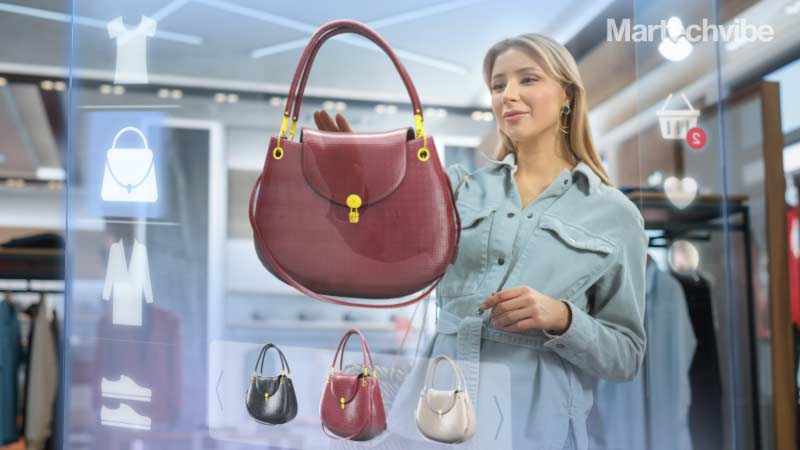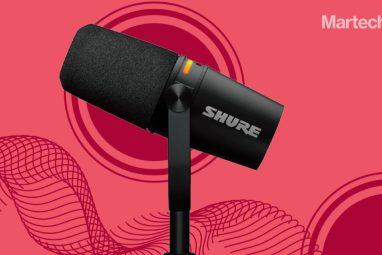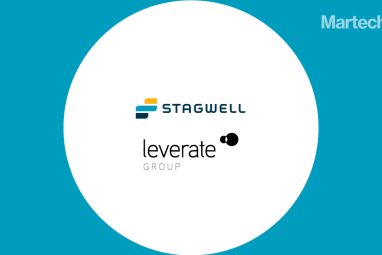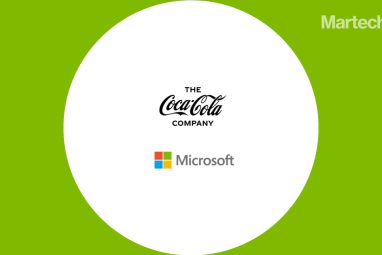How To Amplify Your Marketing With 3D/AR
If you were to estimate how many ads you see in a day, what would you guess? Industry experts vary in their opinions, but reports range from the average person seeing 4,000 – 10,000 ads per day. That may seem excessive, but when you consider that the average American spends over 7 hours staring at […]
Topics

If you were to estimate how many ads you see in a day, what would you guess? Industry experts vary in their opinions, but reports range from the average person seeing 4,000 – 10,000 ads per day. That may seem excessive, but when you consider that the average American spends over 7 hours staring at screens every day, those numbers become more believable.
So what does this mean for marketers looking to capture consumers’ attention? For starters, it means that screens are incredibly crowded, and making an impact can be a struggle with the constant noise bombarding consumers. Second, it means that channels not reliant on a screen become all the more valuable as opportunities to capitalise on more 1:1 interactions.
Among the fastest-growing tools for marketers are 3D and augmented reality (AR), which bring products to life with realistic and immersive experiences that have proven to drive significant results. While digital platforms are the most common applications for 3D and AR, they are far from the end of the potential for 3D and AR in commerce.
5 Ways 3D/AR Help Your Website
Increase Time Spent
The more time a user spends with a product, the more likely they are to convert. Whether a brand deploys a 3D configurator, AR lens, or AR product preview, time spent with an AR ad or on an AR-enabled website has shown to be significantly higher than traditional media. Time spent with AR ads averages at 75 seconds, which is 4x as high as video. Eyewear brand Bolle saw an 18-second average time spent with their AR models, along with an 85 per cent increase in new traffic to their website.
Improved Customer Experience
80 per cent of consumers say that the buying experience is as important in their decision process as the product itself, and 66 per cent say that they would be more interested in shopping with brands who have 3D and AR enabled capabilities. As more brands adopt these technologies as part of their core digital offerings, 3D and augmented reality will become the standard as opposed to innovative.
Shared Experiences
Even in the digital age, word of mouth is still the gold standard of marketing, with referrals from friends and families still the most trusted source. It is an exciting opportunity, then, to know that MediaPost found users share 62 per cent of AR-powered ads they interact with. Studies also found that 26 per cent of respondents shared AR content to get feedback on how something looks, providing compelling data for apparel companies pursuing the use of virtual try-on.
Higher Conversions
The end goal for the majority of brands is to sell more products than they previously had. As competition becomes stiffer and barriers to entry are removed, the need to gain and retain loyal customers is paramount. Providing a better customer experience has proven to attract more customers, and data from ecommerce leader Shopify shows that products enabled with AR have driven 94 per cent more conversions than those not enabled with AR capabilities. In a recent campaign with Snap, MAC Cosmetics saw a 17x life in purchases while Ulta drove 30+ million virtual try-ons and $6 million in sales over a two-week period.
Reduced Returns
Average returns for ecommerce range from 20-30 per cent, representing some of the biggest areas of loss for brands. Consumers return products for many reasons, but one of the most commonly reported complaints is that the product did not look like the picture when it arrived. High-fidelity 3D configurators and augmented reality reduce these concerns by providing buyers with lifelike models of the products they are shopping for, ensuring their purchase will look great and fit their needs when it arrives.
How To Use AR With Traditional Marketing
On average, 58 per cent of marketing budgets are allocated to digital marketing, but as marketers at all levels look to derive more value from their channels, traditional media is poised to take advantage of technology in new and innovative ways.
Augmented Reality and Print Media
Magazines and catalogues may have fallen out of favour for a few years, but a desire for slower-paced consumer/brand contact from both sides has given rise to increased interest in the power of snail mail. Brands ranging from sporting apparel to high-end furniture leverage traditional print media with their own catalogues, as well as ads and sponsored editorials in popular publications. While a significant portion of emails will be deleted without ever being open, many consumers can’t resist flipping through a few pages of a new catalogue. Similarly, direct mail coupons and fliers are given at minimum, a cursory glance before being discarded and often remain in the receiver’s house long after its delivery.
To connect this analogue discovery with digital purchase behaviour, brands are turning to digital experiences triggered with traditional marketing assets. Consider a consumer perusing the spring catalogue from Ballard Designs. The luxury home furnishings brand has just released their new patio line, and as the potential buyer looks out at her patio, she wonders what that conversation set would look like in her yard. Instead of setting the catalogue aside, she uses her phone and the QR code at the bottom of the page to trigger an AR experience that places that set with the cushion colour of her choice in exactly the spot she imagines it. No more imagining, the vision is now within reach, and the likelihood that she will make a purchase has exponentially increased.
Discovery and initial engagement are not the only areas of opportunity with AR and direct mail. Augmented reality can also be used to re-engage the owner of an abandoned cart. 3D configurators are a popular tool among brands who offer a variety of colours and features within their product SKUs. As stated before, the more time spent with a product, the greater the chance of a conversion. While not all consumers who configure a product on a brand website will be buyers, the time spent on customizing a product to their taste generally leaves an impression.
Imagine a bike company with a 3D product configurator that allows buyers to choose the model, colour, seat type, and add-ons such as lights or accessories for their bike. At the end of the experience, the buyer adds the bike to the cart but does not complete the purchase. The majority of brands will send a cart abandonment email if they have the buyer’s email address. However, if they also have their mailing address, the brand can send a piece of direct mail with a QR code that triggers an AR model of not only the style of bike the consumer built but their exact configuration.






